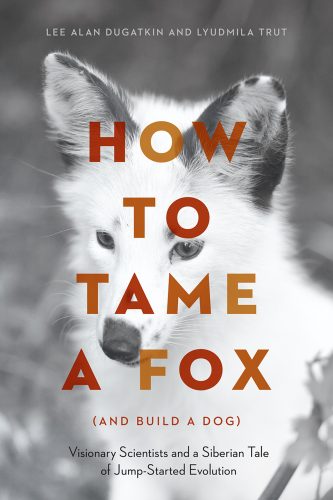How does an animal transform from a violent hunter into a loyal companion in the space of just a few generations? Or, put more simply: what defines a dog? American evolutionary biologist Lee Dugatkin and Russian geneticist Lyudmila Trut explain the mystery in their new book, How to Tame a Fox (and Build a Dog). The authors paint a thrilling portrait of the longest-running experiment in animal behavior: an attempt to recreate domestication of silver foxes. The conception and details of the project are placed in the historical context of the Soviet Union under Stalin and beyond, making the story a mix of scientific discovery, folk tale and spy novel.
Dmitri Belyaev, the Russian scientist who devised the experiment, selected silver foxes from commercial fur farms scattered throughout Russia and gradually turned them into pets. Belyaev’s method was easy: select the tamest fox pups, breed them, and repeat. The domestication of wolves was estimated to have taken 15,000 years, but Belyaev’s team observed changes within only a few generations. To date, they have bred 56 generations and counting. The first foxes snarled and lunged at the researchers, who approached wearing thick gloves. Now, the foxes race towards people, lobbying for pats and nuzzling their caretakers. Interestingly, these tamer foxes physically resemble dogs more than their wild predecessors. Their ears are floppy, their fur is piebald, and their tails wag wildly. New work aims to understand the genetic changes behind this transformation.
The research setting itself is dramatic, located in freezing Siberia. Dugatkin and Trut inspire a continual sense of awe, relaying multiple anecdotes of the workers’ strength and devotion. One research project required midnight blood samples from the foxes. Shifts lasted three weeks, with temperatures below -40°F, yet none of the workers complained, despite having multiple children at home to care for. Trut remembers their attitude as “if it was for science, let’s do it.” Yet, perhaps the most surprising of the novel’s traits was its successful evocation of in the reader. Not only was the story gripping and the book hard to put down, but one feels nearly ready to head to Siberia and meet the foxes—despite the freezing cold weather!
Tightly-woven, accessible, and engaging, How to Tame a Fox has received praise from across the board. By incorporating the social and historical context of the experiment, the authors make the book a compelling read. Ultimately, the book investigates the interplay of genes, evolution and environment on behavior: a new take on the age-old debate of nature versus nurture. This fantastic and entertaining story is a relevant reminder of the wonders research can uncover.
Rating: 4.5/5 stars

